By Lazaros Spiropoulos
The below itinerary includes an overview of the geographical, historical, and archaeological elements surrounding Mount Athos – a place of profound significance. Repetition, as they say, is the mother of learning, so let us delve into this sacred journey.
Holy Thursday, April 26, 2019: Departure from Argos Orestiko
Our party of four, Haris Tsioupas – retired veterinarian, Ioannis Kalivas – mathematician, Constantinos Goudis – attorney at Law, all from Argos Orestiko and myself (born in Argos now from Wollongong) set off on our pilgrimage from the historic city of Argos Orestiko, situated in the ancient region of Maketa—the very cradle of Macedonia. It was here that the words “Macedonia,” “Macedonians,” and “Macedon” originated, albeit through linguistic evolution. Our destination: Mount Athos – Άγιον Όρος.
The Origin of the Name “Athos”

The name Athos traces back to the mythical Giant Athos, who participated in the Gigantomachy alongside the gods of Greek mythology. This epic battle unfolded in what is now Pallini (named after Athos’s daughter) also known as Flegra, the first peninsula of Halkidiki.
En Route via Thessaloniki
Our journey takes us through Thessaloniki, the capital of Northen Greece, a city closely associated with Saint Demetrius who was martyred in 304 AD during the Christian persecution under the Emperor Galerius. The Kamara, a well-known arch in Thessaloniki, commemorates his victory over the Persians in 297 AD.
Ierissos: Ancient Acanthus and Beyond
Continuing our journey, we arrive at Ierissos, once known as ancient Acanthus. This coastal town, along with others like Andros, has a rich history dating back to 655–654 BC. Notably, excavations here have yielded numerous gold Darian coins, relics of the Achamenid dynasty and the reign of King Darius I (521–486 BC). Ierissos serves as one of the two gateways to Mount Athos from where ferries run from Ierissos to the east coast of the peninsular. The other being Ouranoupoli.
Ouranoupolis: Gateway to Mount Athos
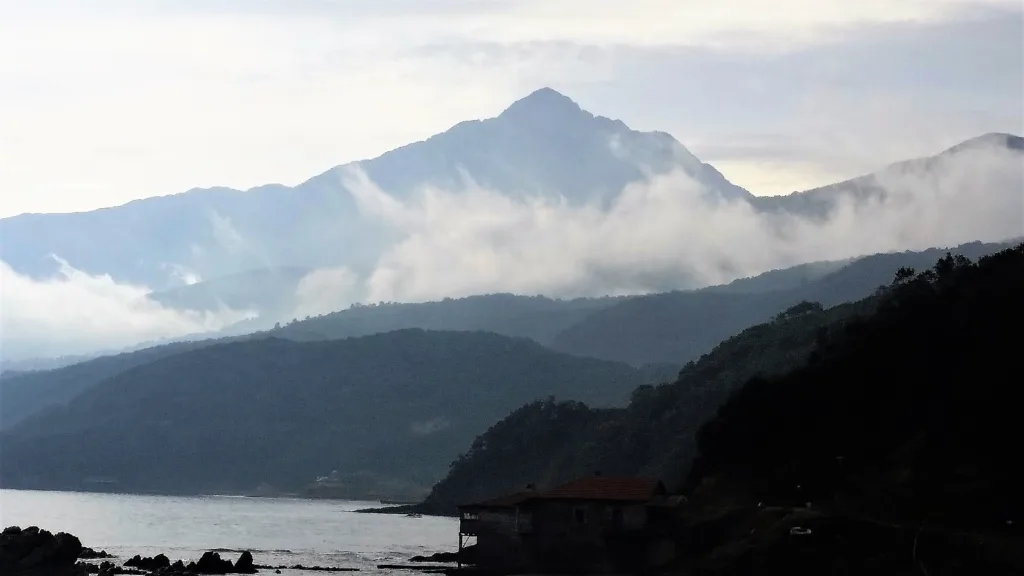
Ouranoupolis, nestled on the coast, overlooks the Singitic Gulf also known as The Mount Athos Gulf – Κόλπος Αγίου Όρους – the gateway to Mount Athos. Across the gulf lies the island of Ammouliani, adorned with the islets of Feti, Penna, and Artemis (collectively known as Drenia). Since 1922, Ouranoupolis has served as a refuge for settlers from Asia Minor. It marks one of the two entrances to Mount Athos, the revered ark of Orthodoxy. The other being Ierissos. Located near the harbour is the landmark Byzantine Tower which was built in the 14th century by monks of the Vatopedi Monastery to protect the area from enemy invasions.
A Pilgrimage to Mount Athos: Crossing Borders and Sacred Waters
Our journey begins with the anticipation of a sacred encounter. Armed with our Διαμονητήρια – the coveted Mount Athos Visa – which were waiting for us at the pilgrims’ offices here, we were about to set sail on a path secured over three months earlier at the offices of Mount Athos in Thessaloniki. We purchased our ferry tickets and found a café by the shore where we enjoyed a coffee and spanakopita while waiting for the ferry.
Embarking on the Axion Esti
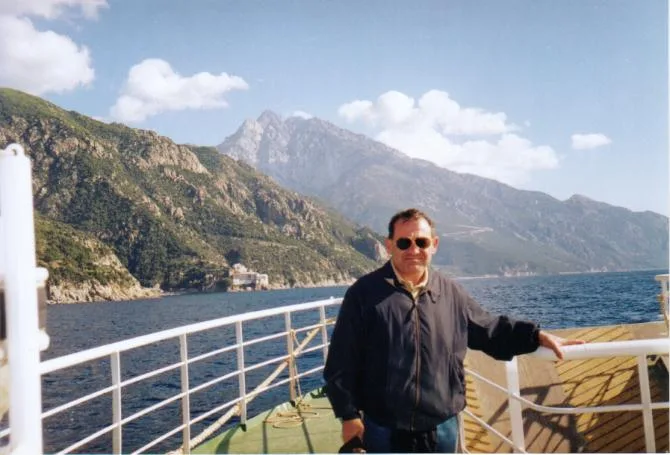
Around 9:45 am, our ferry Axion Esti arrives to carry us away from Ouranoupolis, the mundane threshold, towards a realm where time stands still and earthly concerns fade. As the Axion Esti glides across the waves, we make short stops at the arsanades – the piers of the different monasteries for embarking and disembarking pilgrims. During the passage we see glimpses of the sacred landscape connecting pilgrims to the spiritual heart of Mount Athos. After two hours sailing, we arrive at the arsana for the HM of Konstamonitou for our first night. Here, the stone slab slopes like a tongue into the sea, leading us to the Monastery of Konstamonitou. The shipyard, perched on this ancient stone, awaits our arrival.
The Yellow Sign and the Double-Headed Eagle
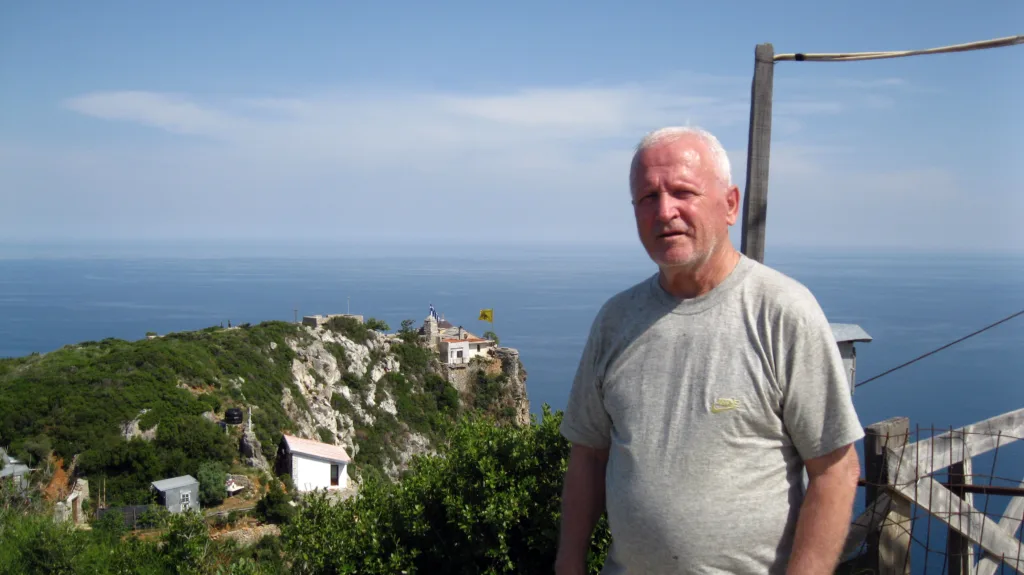
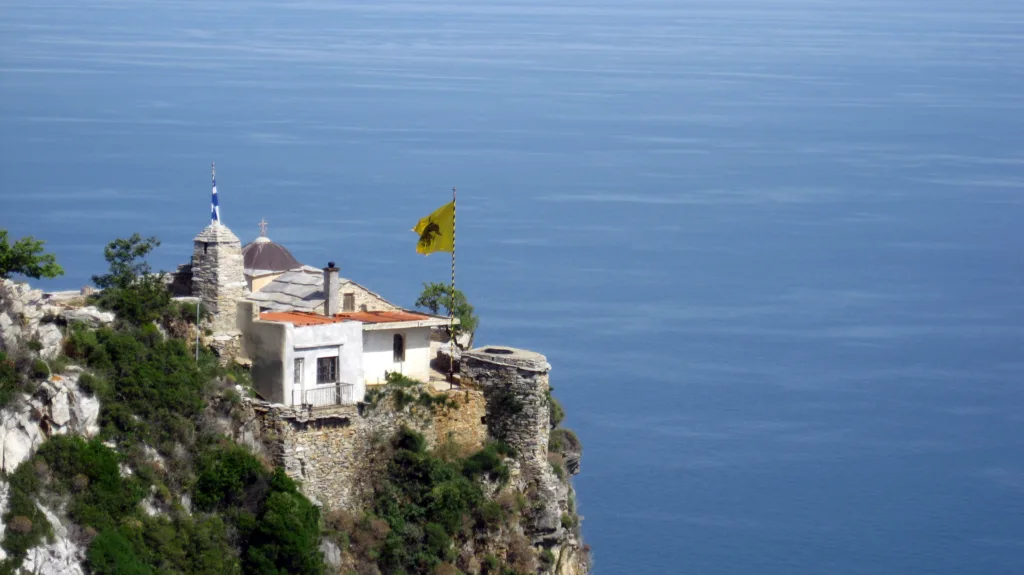
A yellow sign catches our eye – a map adorned with the double-headed eagle, a symbol etched into the very fabric of Mount Athos and its churches. Initially single-headed, this majestic bird now reigns supreme across the Holy Mountain. Its transformation occurred after the fall of Constantinople in 1453 when the Ecumenical Patriarchate of Constantinople adopted the emblem of the double-headed eagle to symbolise the Orthodox faith and the unity of the Eastern and Western Roman Empires.
Where Eternity Meets Stone
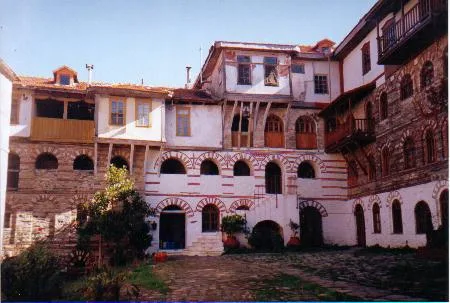
We hop on the back of an old table-top truck which the monks of the monastery of Konstamonitou have kindly provided for us. It saves us a long and hard trek up the mountain. Our journey unfolds from the harbour along several kilometres of dirt track leading us to the Monastery on Good Friday, April 26, 2019. As the sun reaches its zenith, we arrive for our first overnight stay.
The Monastery of Konstamonitou: A Hidden Gem in the Forest
Nestled in the untrodden forest of Kreivovouni, at the heart of the Athos Peninsula, lies the secluded Monastery of Konstamonitou. Its solitude is intentional – a safeguard against the fearsome pirates who once ravaged the North Aegean.
Archontariki: The Guest House of Stone
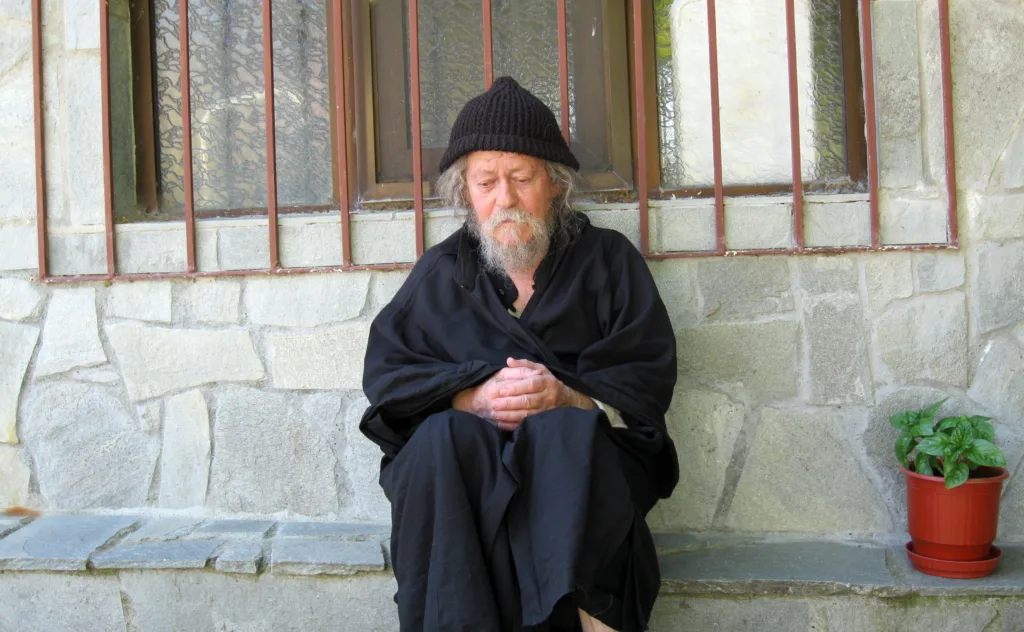
In all monasteries, where stone stands as the symbol of eternity, we find the Archontariki – the Guest House. Here, the Archontari and monks extend their warm reception. Coffee, tsipouro and loukoumia grace our arrival, following which, the monks advise us of the times for esperinos (vespers) and orthros (morning matins or prayers) and we are shown to our simple but tidy rooms. This ritual is consistent in all the monasteries with only minor variations.
A Legacy of Centuries
Founded in the 11th century during the reign of Alexios I Komnenos (emperor from 1081–1118 AD, born in 1057), this monastery bears witness to Byzantine history. Some attribute its establishment to Alexios’ daughter, Alexia, whose chronicles echo through time. However, an alternate version suggests that Constantine the Great or his son Constanzas laid its foundations around the 4th century.
Katholikon: A Sanctuary of Devotion
The katholikon, or chapel, adorned with the icon of Panagia Odigitria (Our Lady of Guidance), stands as a tribute to the first martyr, St. Stephen (celebrated on December 27). Within its hallowed walls, icons of historical significance abound. Among them, the miraculous icon of Panagia Antifonitria (akin to Vatopedi Monastery) holds a well-known miracle dating back to 1020.
Esperinos – Vespers
At sunset it is time for esperinos – vespers, so we make our way to the katholikon – the chapel, where the monks have gathered to chant psalms, hymns and biblical passages creating an air of spiritual contemplation. The monks follow the Byzantine tradition of chanting. A melodic form which has been preserved for over a millennium that evokes a sense of heavenly reverence. It is a time for reflection, gratitude, prayer and for seeking divine guidance. The katholikon is in darkness with just a few votive candles offering any illumination. In the dim light, the monks, dressed in black look like phantoms gliding around the katholikon. The chanting together with the fragrance of the livani relaxes and comforts me and time stands still.
Trapeza – Supper
After esperinos it is time for trapeza or supper, the main meal of the day. The dishes are simple vegetarian meals with side dishes of olives, feta cheese, bread, fruit, water – and except for fasting days – a glass of red wine that has been produced by the monks with grapes from the monastery’s own vineyards.
The monks and the pilgrims are seated separately but all partake of the same meal which is eaten in a hushed reverence. The only sound that can be heard is the scraping and clinking of the cutlery and the accompanying voice of a monk reading a passage of scripture. At some point a small metal triangle is sounded and this signifies that supper is over.
The pilgrims stand and wait in silence for the monks who form a guard of honour and bow their heads as the pilgrims exit the dining room. In contrast, after vespers it is the pilgrims who wait reverently for the monks to enter the dining room and be seated before they themselves enter. This ritual is consistent in all the monasteries.
Evening in a monastery
After trapeza some of us enjoy a stroll around the monastery grounds or have a read in the library and then it is early to bed for we know we will have a very early wake up to attend orthros – matins or morning prayer which is followed by the main service.
An early morning summons to prayer
Around 3 am, the pounding of the semantron – a long wooden plank struck with a wooden mallet by one of the monks – summons us to όρθρος – orthros – or matins, the morning prayers which will be followed by the Divine Liturgy, the central service of Orthodox Christianity and celebrated daily by the monks.
Breakfast and then on the road
When the service ends, it is time for breakfast which may consist of a simple pilaf rice or kritharaki (risoni) or sometimes some feta cheese, olives, paximadia, coffee and fruit. Then it’s back to our rooms where we gather our belongings, sling on our backpacks, and set off on the path to the next monastery.
Journey to the Holy Monastery of Dochiariou
On Holy Saturday, April 27, 2019, we embarked on a two-hour trek through the wilderness to the Holy Monastery of Dochiariou where at midnight, we were to celebrate the Holy Resurrection – a moment that would be forever etched in our souls.
H.M. Dochiariou: A Byzantine Marvel
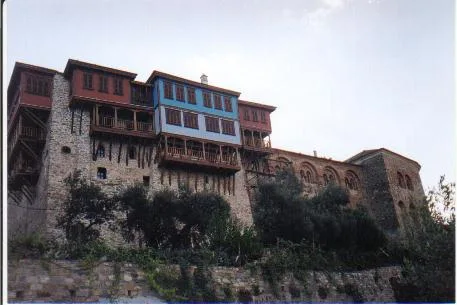
The 11th-century Byzantine building, which underwent renovations between the years 2007–2013, now stands resplendent. Its magnificent tower and gazebo grace the coastal area, their façade transformed over a year. Here, history converges with the present, and the echoes of devotion resonate through time.
The Miraculous Icon of Panagia Gorgoepikoos: A Testament of Faith
During the reign of Andronikos II Palaiologos (1282–1328), the Holy Water of the Monastery flowed freely from a crack in the rocks and continues to do so to this day. A divine sign that echoes through the ages. Here, within a special chapel, the miraculous icon of Panagia Gorgoepikoos (She Who Is Quick to Hear) is enshrined. Faithful pilgrims, seeking her guidance offer their heartfelt tributes.
On Thursday, December 15, 2016, an extraordinary event unfolded here. An 18-year-old mute boy from Skopje, in the former Yugoslavia, while praying before the icon of Panagia Gorgoepikoos, suddenly found his voice. In the presence of the astonished chapel supervisor and a novice monk, the boy spoke—a miracle witnessed by all. Was it the icon’s compassionate gaze that unsealed his lips?
Holy Saturday Worship and Resurrection
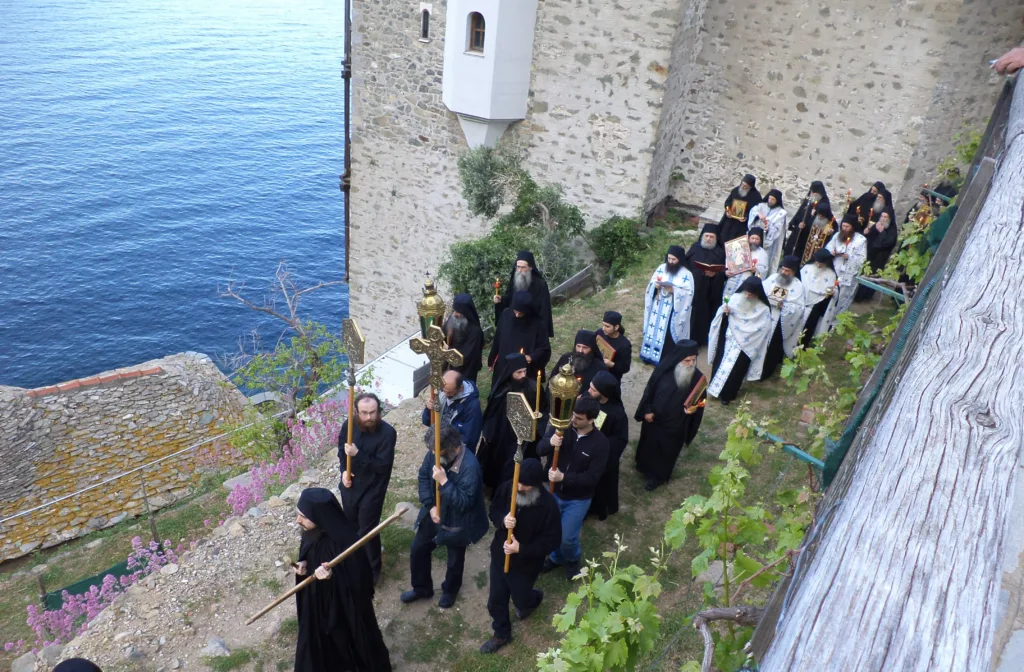
On Holy Saturday, April 27, 2019, a multitude of faithful Greeks together with some other nationals, gathered to worship before the miraculous icon of Panagia Gorgoepikoos. Her presence transcends borders and unites hearts in reverence.
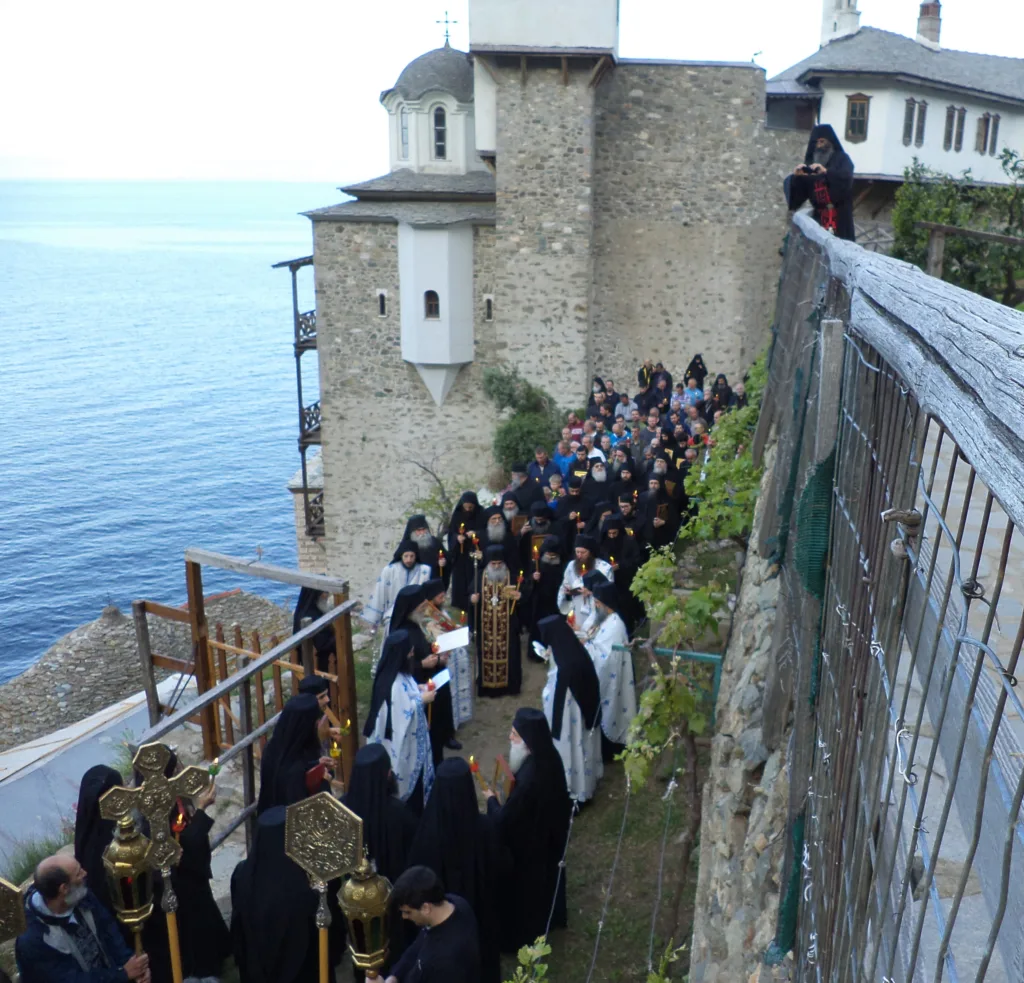
Later that evening, after supper, the pilgrims make their way to the katholikon. Our party each grab one of the stasidia that are strategically placed along the side walls of the katholikon and we settle in.
It is a typical Orthodox Easter service which of course will include the Χριστός Ανέστη – Christ is Risen. The service will continue until about 4am so it will be a long night, but a night of spiritual celebration.
Easter Monday April 29, 2019 – Arrival at HM Agiou Dionysiou
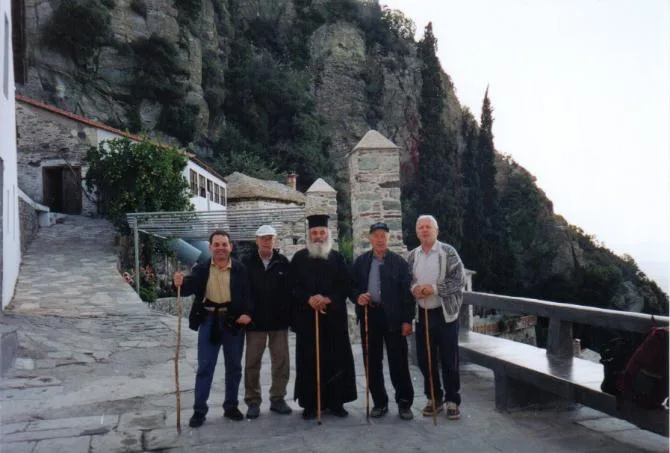
On Easter Monday, we set forth for the Holy Monastery of Agiou Dionysiou, reaching it in a little over an hour and a half. The journey between these monasteries combines spiritual exploration with natural beauty, rugged paths, glimpses of the sea, and moments of serenity as we traverse the sacred Mount Athos terrain. Here, as in all monasteries, the same sacred rhythm unfolds – vespers, refectory, relics for pilgrimage, compline, Orthos, Divine Liturgy, rest, and work.
A Stone Massif on the Edge – A Fortress on the Cliff
The Monastery stands resolute—a stone massif perched 80 meters above the sea. Its rugged walls, deeply scarred by winter storms. Here, amidst rich fishing grounds and submerged grasslands, the monastery guards its legacy. Below, the waves crash against the cliffs, carving their mark. Antithon, rising to a height of 1042 meters, watches over this sacred region.
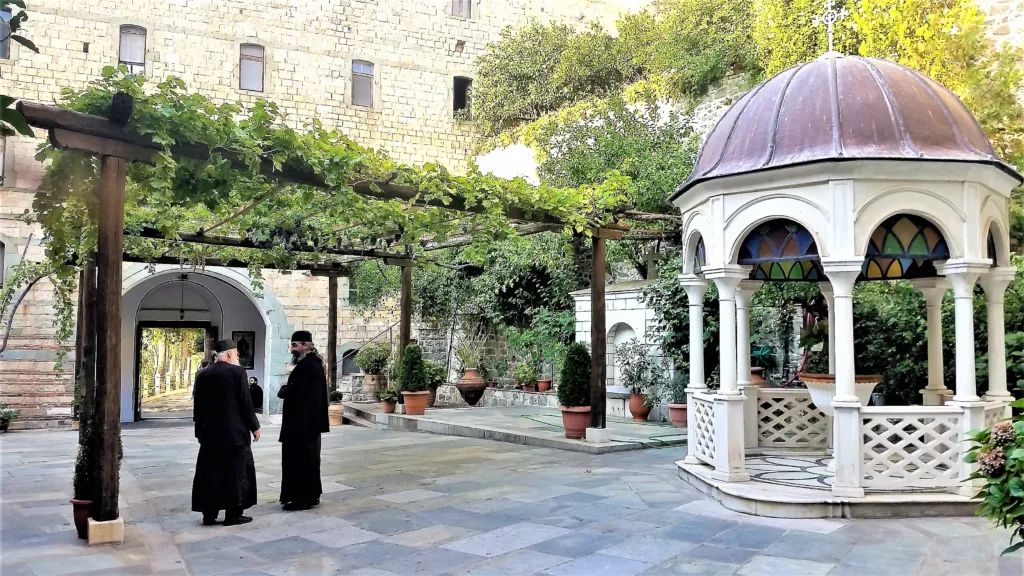

The foundations of the monastery were laid in 1375 by Saint Dionysios of Korisos from Kastoria and was generously financed by Trapezountius Megalo – Emperor Alexios III Komnenos (1349–1390). From its inception, this fortress stood guard against pirate attacks that plagued the North Aegean and Mediterranean. The Byzantine fleet’s decline and seizure by the Ottoman Turks, reverberated here dramatically as throughout Byzantium—an impact felt even today. Within the Monastery of Dionysiou, as in all monasteries, a sacred rhythm unfolds—a timeless dance of devotion. Orthros, refectory, meals, the juxtaposition of relics for pilgrimage, compline, Orthos, Divine Liturgy, rest, and work—all follow the same ancient path.
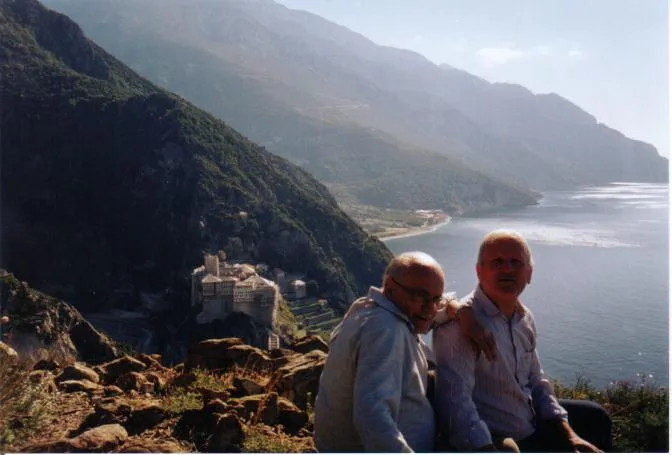
Third Day of Easter April 30, 2019 – Onward to HM Agiou Pavlou.
On the third day of Easter, we set forth on a challenging journey by foot. Traversing a difficult path, we arrived at the imposing monastery of Agiou Pavlou. Nestled at the foot of Mount Athos (which soars up 2033 meters), it boasts stepped gardens that cascade down the slope. Further recent landscaping has extended the gardens to the sea, transforming both the courtyard and the monastery itself.
A Name Rooted in Byzantine Legacy
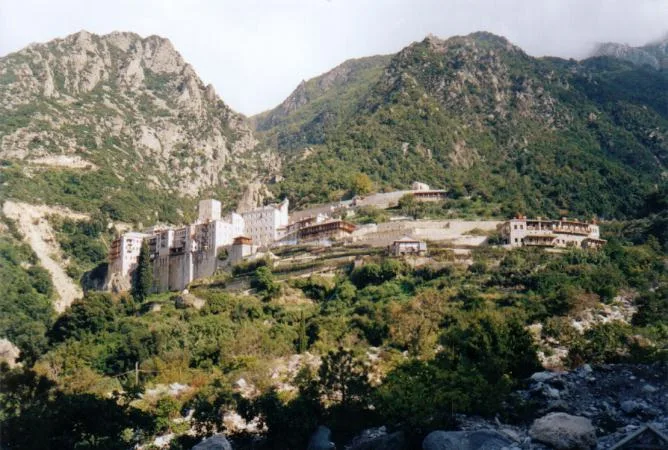
The monastery of Agiou Pavlou derives its name from its founder, Pavlos Xiropotaminos—a scion of a Royal Byzantine family in the late 10th century. Built upon the ruins of an ancient monastery dedicated to the Presentation of the Virgin Mary (circa 337), it holds relics associated with the Magi’s Holy Gifts to the newborn Jesus.
Cave of St. Paul: A Hidden Passage
Above the monastery, adjacent to the carriage road leading to the Monastery of Filotheou, lies the newly renovated Cave of St. Paul. In ancient times, this cave was linked with the monastery through a tunnel—a precaution against pirates. A similar network of underground tunnels once existed in Constantinople.
Journey to the Holy Skete (minor monastery) of Agia Anna: A Fragrant Sanctuary
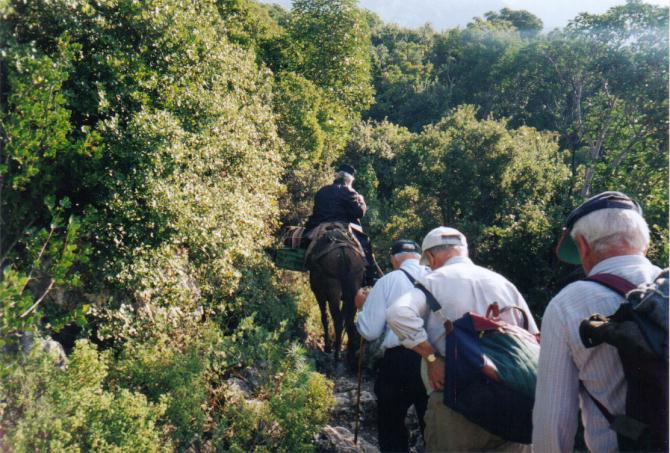
On Wednesday morning, May 1, 2019, at 8:00 am, we embarked on a challenging hour and a half trek from the mountaintop. Passing the New Skete—an annex of the nearby Monastery of St. Paul—we arrived at the Holy Skete of Agia Anna. The Skete, which is an appendix to the Holy Monastery of the Great Lavra, stands as the oldest and largest on Mount Athos—a metropolis of sketes. It comprises 50 kelia (cells) and kalivia (huts) which are home to 85 monks dedicated to their ascetic life.
It is dedicated to the Theopromitor, the Foremother of God, Agia Anna, the mother of Holy Mary. Within its walls resides a relic—an indestructible and unaltered part of Agia Anna’s lower left foot which emits a fragrant blessing to pilgrims.
The Venerable Icon of Saint Anne
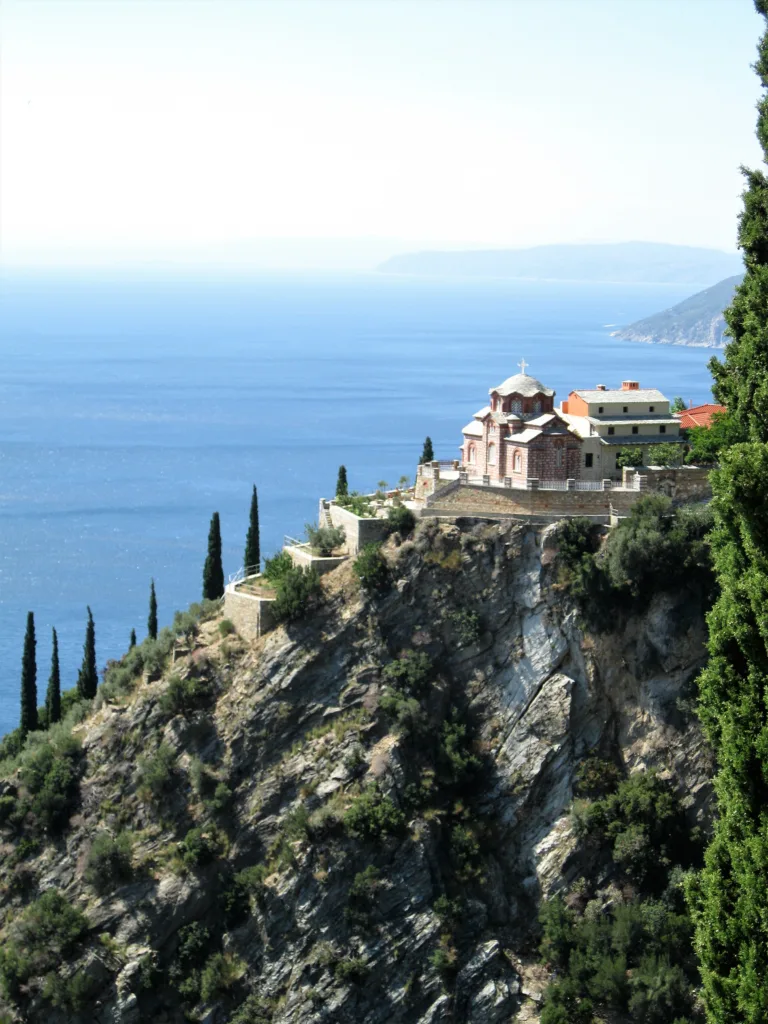
Inside the church, in the right chancel (area for the cantors), an icon venerates Agia Anna cradling the infant Virgin Mary in her arms. This sacred image has witnessed countless offerings—votive gifts of gold or silver, adorned with photos of newborns. Many women around the world who were told they were infertile have reported conceiving after praying before one of these icons. A similar phenomenon occurs on Prigiponnisos, an island in the Bosphorus in Constantinople, where barren women both Greek Orthodox and Muslim flock to the church of St. George on the Saint’s feast day, April 23to pay their respects in the hope they will be blessed with fertility and motherhood.
The Left Chancel – Saints of the Skete
Since 1930, the left choir of the church has housed an icon depicting the 16 Saints who excelled as monks in the Skete. Among them is Saint Savvas from Kalymnos, whose icon holds a special place in the beautiful church of Agios Nektarios in our city of Argos Orestikon.
Homeward Bound
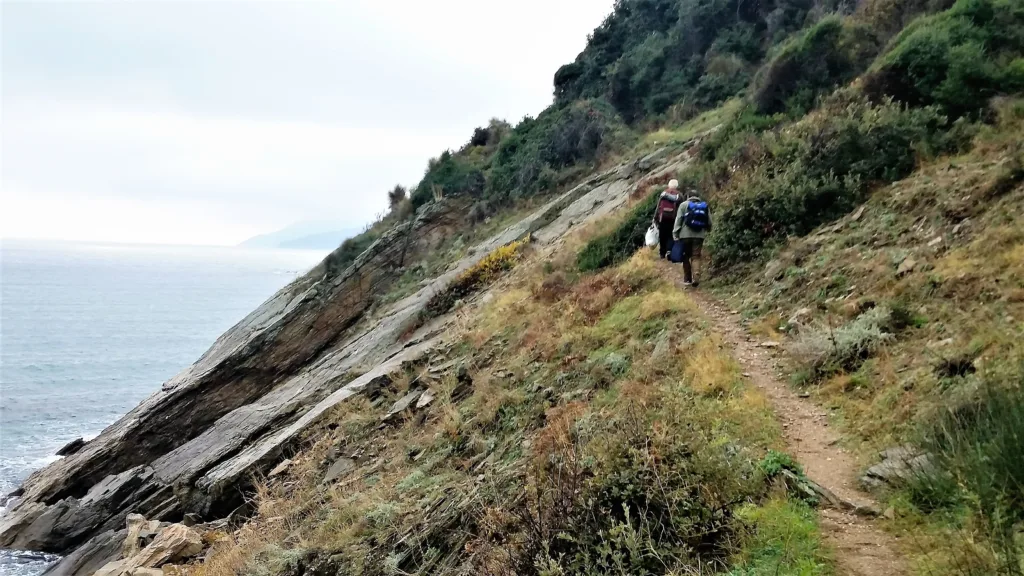
On Thursday, May 2, 2019, we bid farewell to the Skete. Descending approximately 2500 steps and landings, we passed the cell of the legendary foresighted monk, Elder Papagiannis near the arsana. Boarding the ferry Agia Anna, we sailed to Dafni reaching it in two hours and from there, in another forty minutes, we were back in Ouranoupoli where we disembarked for the return to the outside world before journeying back to our city, Argos Orestiko.
Monks’ Ministry: Devotion and Grace
The monks of Mount Athos minister to visitors willingly, their smiles reflecting inner peace. For our sake, they devote themselves to God through prayers, liturgies, and other sacred duties. These revered fathers carry forward the traditions of Orthodoxy and the Greek nation on Mount Athos, embracing deprivations, anxiety, and self-denial.
Monasticism: An Oriental Exercise
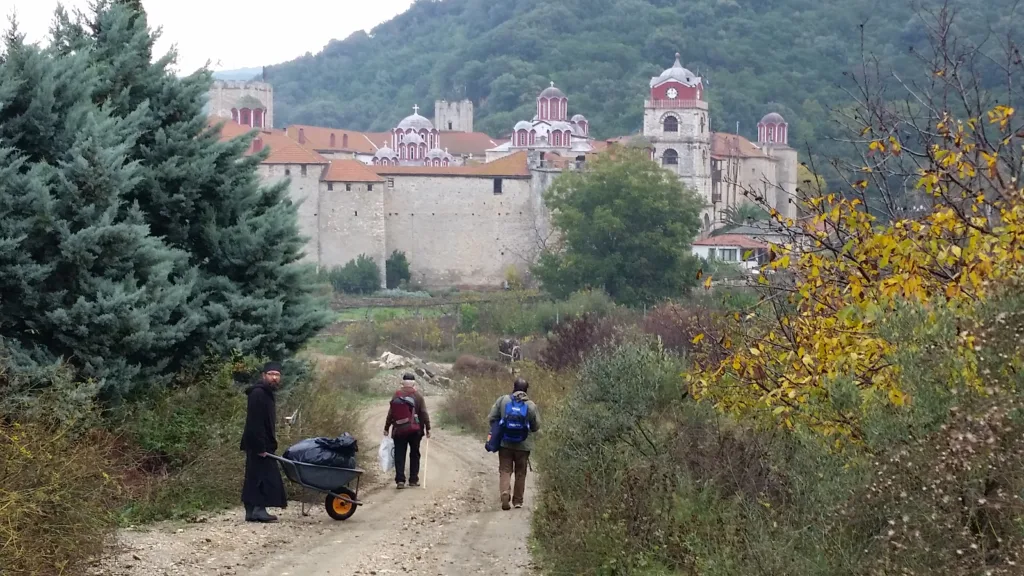
Monasticism, primarily of Oriental origin, traces its roots to the 8th-9th century. Resplendent centres, mostly in Asia Minor, embraced mystical monastic life. Bithynian Olympus, where Methodius (born in 815 AD) practiced alongside his brother Kyril (born in 826 AD), exemplifies this tradition. These emissaries to the Slavs, hailing from Thessaloniki, carried forth the legacy of Patriarch Photius (Patriarch from 858–867 AD and 877–886 AD) through their iconic gift to the Slavs – the Cyrillic alphabet. Remarkably, this predates the founding and flourishing of Athos, a creation attributed to Asia Minor’s Saint Athanasios the Athonite who completed the first monastery the Great Lavra (Μεγίστη Λαύρα) in 963 AD with the financial assistance of General Nicephorus Phocas (Emperor from 963–969 AD).
Thessaloniki’s Influence and Refuge
The spiritual development of Mount Athos owes much to the refuge provided by Asia Minor monks and non-monks during the spread of Turkmen groups up to the Aegean. Thessaloniki, situated nearby, in the 14th century, assumed great importance in this regard further intertwining its fate with the Holy Mountain.
Mount Athos: A Spiritual Haven
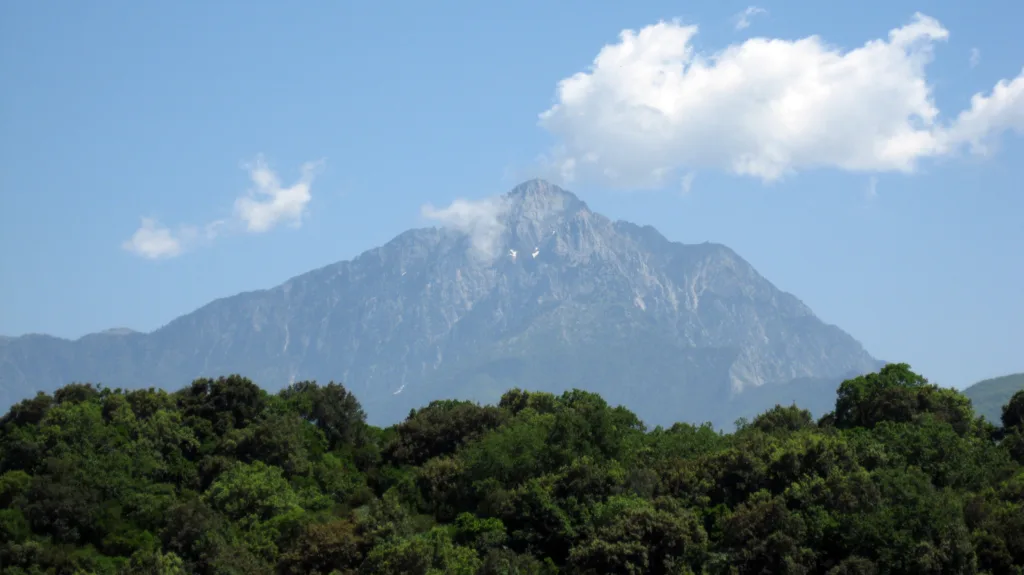
Mount Athos, a place of profound significance, beckons travellers from all corners of the world. This sacred mountain, also known as the “Holy Mountain,” exerts a magnetic pull on the eye and stirs contemplation. Mount Athos is more than a geographical location; it is an essential centre of Eastern Orthodox monasticism. Its allure extends beyond pilgrims to embrace people of diverse backgrounds.
